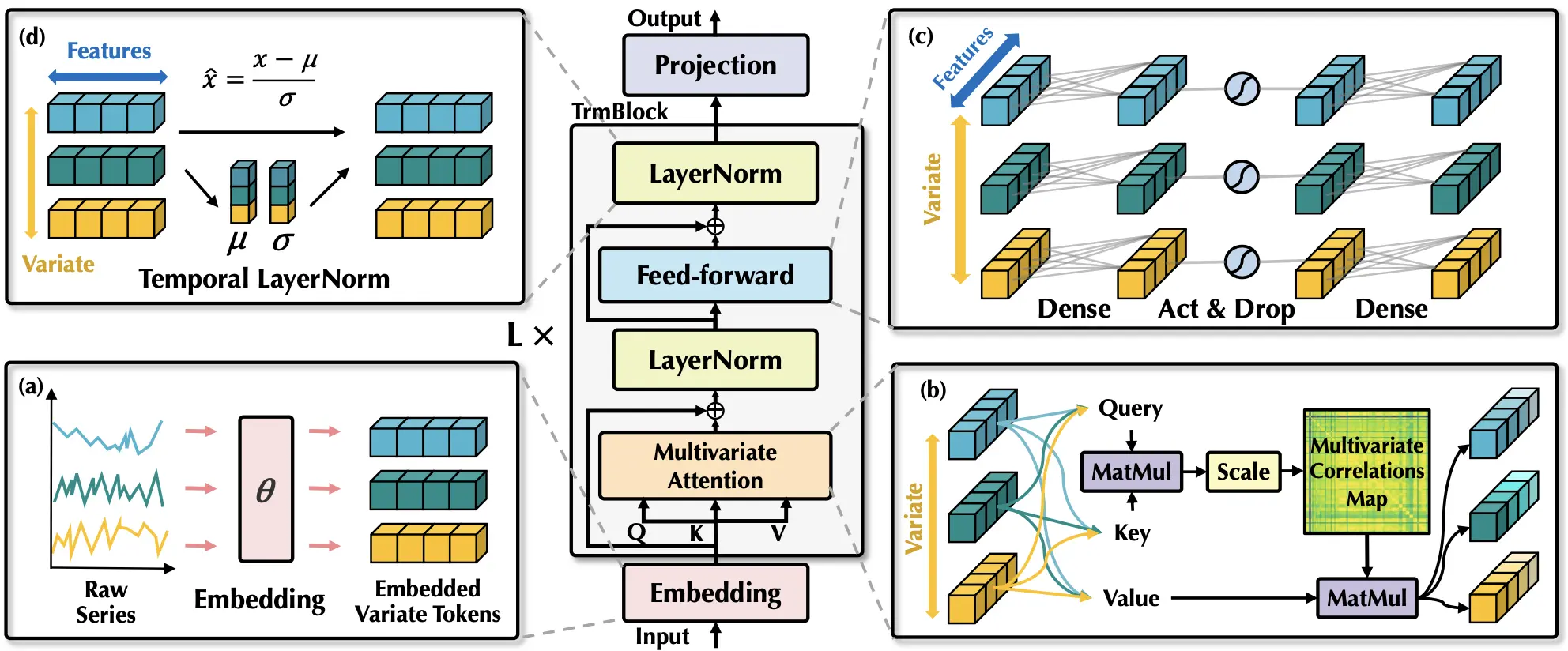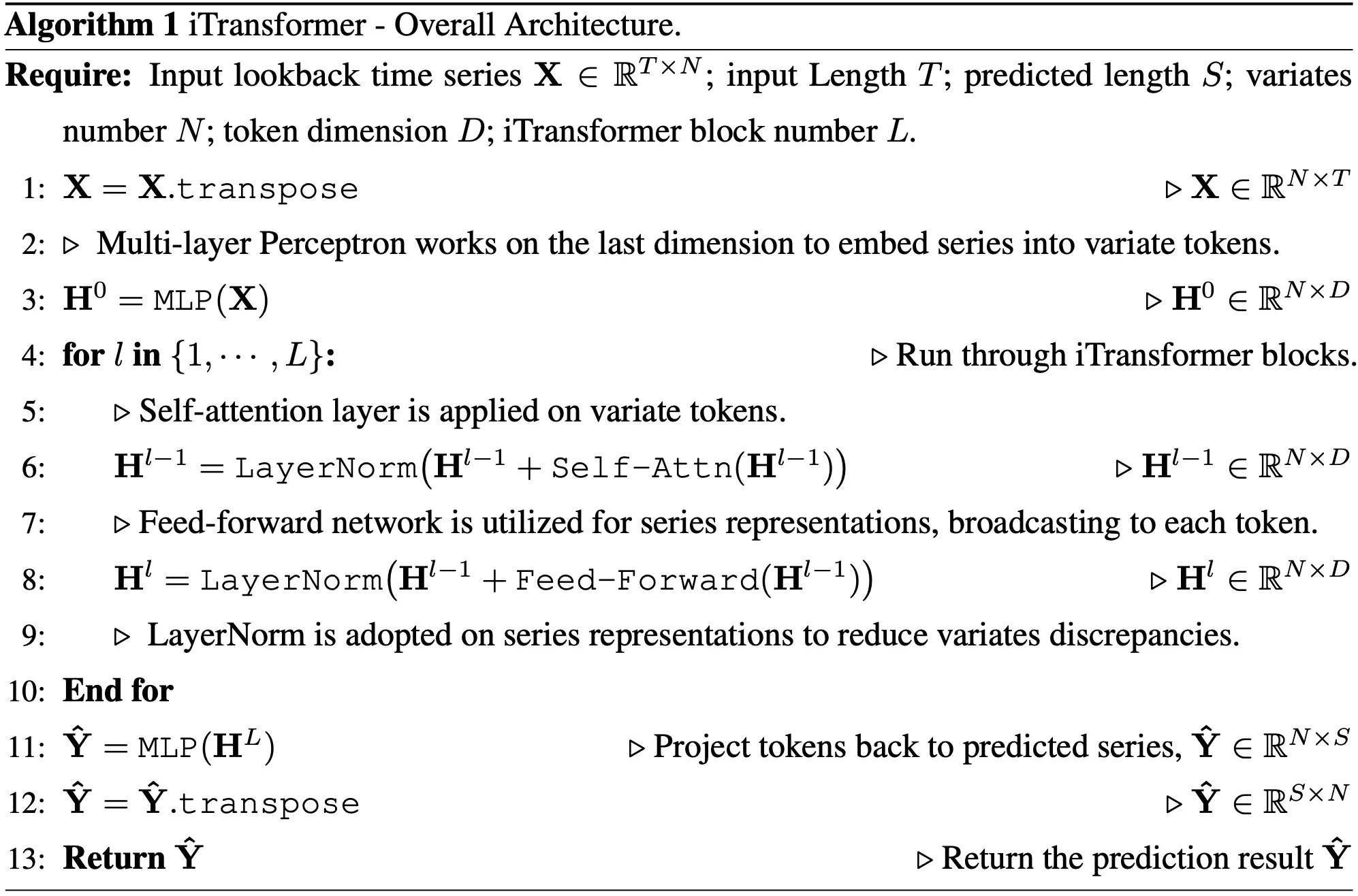iTransformer implementation in pure Rust
by Daniel Boros
Jan 14
4 min read
416 views
What is iTransformer?
iTransformer represents a groundbreaking deep learning architecture specifically tailored for multivariate time series forecasting (MTSF). Unlike traditional Transformers that are predominantly applied to sequential data like text or image patches, iTransformer adapts the Transformer paradigm to time series forecasting by treating each variate (feature) as an independent token. This enables it to capture intricate inter-variate relationships alongside temporal dependencies, making it exceptionally powerful for high-dimensional data.

Why Multivariate Time Series Forecasting?
Forecasting time series with multiple features is pivotal in many domains, including:
- Finance: Predicting complex market behaviors, such as stock trends or volatility indices.
- Energy Systems: Managing energy demand, predicting consumption patterns, or renewable energy generation.
- Meteorology: Simultaneously modeling temperature, pressure, and other meteorological factors.
- Transportation Systems: Understanding vehicle traffic patterns and forecasting congestion.
In contrast to univariate time series forecasting, which focuses solely on a single feature, multivariate forecasting requires a nuanced understanding of how features interact over time. Capturing both temporal and inter-variate dependencies is critical, and iTransformer excels in this area.
Theoretical Foundations of iTransformer
The iTransformer architecture reimagines the Transformer model by reversing its application to time series. Below is an in-depth analysis of its key components and differences compared to traditional Transformers.
Traditional Transformer vs. iTransformer
Data Representation
Traditional Transformers process sequential tokens, such as words in a sentence, with the sequence length forming the primary dimension of attention. For a multivariate time series , where:
- is the temporal dimension (sequence length), and
- is the number of variates (features),
traditional approaches flatten into a sequence of tokens or process each feature independently over time, often losing inter-variate relationships.
In iTransformer, the input matrix is transposed to . Each variate becomes a token, and the temporal dimension is embedded implicitly. This allows iTransformer to model relationships between variates explicitly, a fundamental departure from conventional Transformers.
Embedding Layer
Each variate is mapped into a higher-dimensional representation using a Multi-Layer Perceptron (MLP):
Here, represents the token embedding dimension. This embedding encodes both temporal information and feature-specific characteristics, setting the stage for subsequent attention layers.
Attention Mechanism
The self-attention mechanism in iTransformer focuses on capturing inter-dependencies across variates. For a given layer , self-attention updates the representation of each variate token :
The self-attention operation computes scaled dot-product attention:
where represent the query, key, and value matrices derived from . This mechanism ensures that each variate token integrates information from all other variates, effectively capturing their dependencies.
Feed-Forward Network (FFN)
After self-attention, a position-wise feed-forward network refines the representation of each variate independently:
The FFN consists of two linear transformations with a non-linear activation (e.g., GELU) in between, enhancing feature-specific representations.
Hierarchical Representation
By stacking multiple layers of self-attention and feed-forward blocks, iTransformer constructs hierarchical representations that jointly encode temporal patterns and inter-variate relationships. The depth determines the capacity of the model to capture complex dependencies.
Output Projection
The final output representation is projected back into the time series space through another MLP:
Here, denotes the prediction horizon, i.e., the number of future timesteps to forecast. The predicted matrix is then transposed back to align with the original input shape.
Algorithmic Description
The following formal algorithm describes the iTransformer workflow:

This algorithm encapsulates the essence of iTransformer, detailing its inversion of the traditional Transformer paradigm to better suit multivariate time series data.
Rust Implementation
The iTransformer architecture has been implemented in Rust, leveraging its high-performance capabilities and memory safety. Below is a detailed explanation of the implementation.
GitHub Repository
Explore the full implementation at iTransformer on GitHub.
Installation
To use iTransformer in your Rust project, include it as a dependency in your Cargo.toml:
[dependencies]
itransformer = "1.0.0"
Key Components
iTransformer's Rust implementation mirrors its theoretical design, with components that map directly to the model's architecture.
Core Struct: ITransformer
The main struct defines the architecture, including parameters for the number of variates, lookback length, depth, token dimensions, and attention mechanisms.
#[derive(Debug)]
pub struct ITransformer {
num_variates: i64,
lookback_len: i64,
pred_length: Vec<i64>,
num_tokens_per_variate: i64,
mem_tokens: Option<Tensor>,
reversible_instance_norm: Option<RevIn>,
layers: Vec<(Attention, FeedForward)>,
mlp_in: MlpIn,
pred_heads: Vec<PredHead>,
}
Example Usage
The following example demonstrates how to initialize and use iTransformer in Rust:
use tch::{Device, Tensor, nn::VarStore, Kind};
fn main() -> Result<(), Box<dyn std::error::Error>> {
let vs = VarStore::new(Device::Cpu);
let model = ITransformer::new(
&(vs.root() / "itransformer"),
137, // Number of variates
96, // Lookback length
6, // Depth of Transformer blocks
256, // Hidden dimension
Some(1), // Tokens per variate
vec![12, 24, 36, 48], // Prediction lengths
Some(64), // Dimension of each attention head
Some(8), // Number of attention heads
None, // Attention dropout probability
None, // Feed-forward multiplier
None, // Feed-forward dropout probability
None, // Number of memory tokens
Some(true), // Use reversible instance normalization
None, // Reversible normalization affine
false, // Use FlashAttention
&Device::Cpu,
)?;
let time_series = Tensor::randn([2, 96, 137], (Kind::Float, Device::Cpu));
let preds = model.forward(&time_series, None, false);
println!("{:?}", preds);
Ok(())
}
Main Result of Multivariate Forecasting
The iTransformer was evaluated on challenging multivariate forecasting benchmarks (generally hundreds of variates). The main result can be found in the table and further benchmarks under the GitHub repository of the original implementation. Comprehensive good performance (MSE/MAE ) is achieved.
Online Transaction Load Prediction of Alipay Trading Platform (Avg Results)
